Seoul 2006 - Part IV: Attractions in Seoul
(Continued from Seoul 2006 - Part III: Japan and Korea in the past.)
The biggest attraction in Seoul is no doubt Korean cuisine - Korean barbecue restaurants are everywhere. But there are other things to do in Seoul as well.
First, Korean palaces. I visited two of them: Changdeokgung Palace (a UNESCO World Heritage site) and Toksugung Palace. It was unfortunate that Biwon or the Secret Garden, the back garden of the Changdeokgung palace, was closed to the public until May.
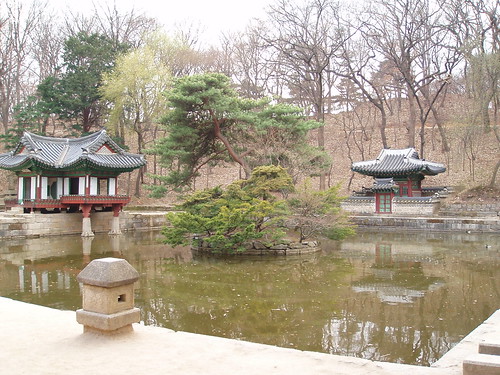
Buyongji pond, Changdeokgung Palace - the only part of Biwon garden open to the public when I visited the palace. The view that pine trees grow in the middle of a square pond is (perhaps) rather unusual in Far East.
Toksugung Palace, on the other hand, is quite intriguing in the sense that one building (Jeonggwanheon Hall) is half-Korean and half-Western and that another (Sokchon-jeon) is totally Western (of Greek-Roman style).
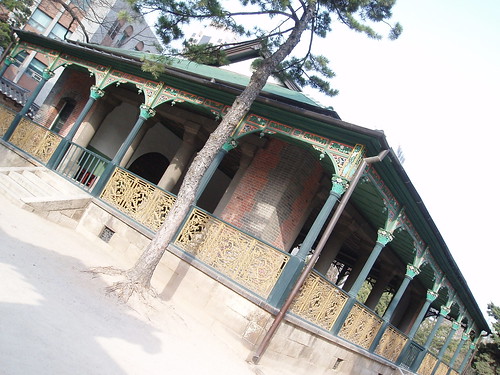
Jeonggwanheon Hall
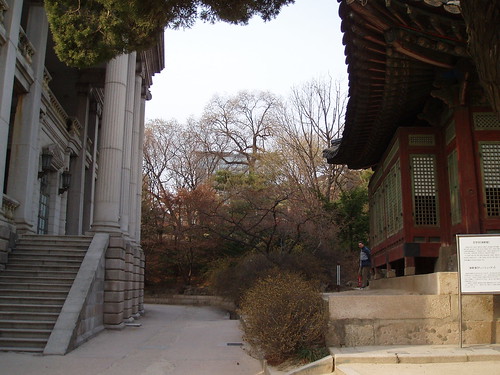
Sokchon-jeon (on the left) stands right next to a building of Korean tradition in Deoksugung Palace.
Overall, Korean kings used a lot of green colour to paint palace buildings, which I think is distinctive in the Far East region.
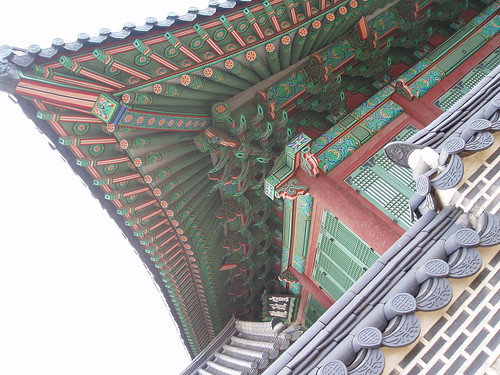
A roof edge of (probably) Injeongjeon, Changdeokgung Palace
I found it interesting for Seoul to have both Tokyo-like aspects (skyscrapers, billions of showy signboards, etc.) and Kyoto-ish characteristics (preserved old buildings due to the fact that it has been the capital of Korea since long time ago).
Another attraction in Seoul is Insa-dong Street. It has got a distinctive atmosphere created by a black cobblestone street lined with both traditional buildings as well as contemporary low-rise ones such as the Ssamjikil shopping mall (No, don't imagine an American-style shopping mall. It's much, much more stylish than that. A shame I forgot taking photos...). Some shops sell traditional Korean artcrafts while there are small contemporary art galleries as well. Even Starbucks is forced to match the landscape by having the one-and-only Hanguel-lettered "Starbucks" sign.
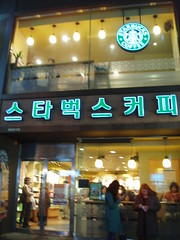 Starbucks Insa-dong.
Starbucks Insa-dong.Another interesting part of Seoul is Hondae, an area around Hongik University - South Korea's best art university. So hip places - bars, clubs, and interesting shops at one of which I bought a cute alarm clock - abound here. I only managed to visit this part of Seoul after dark for just a couple of hours by myself... I should have come here with someone else.
"Fashion buildings" in the Dongdaemun area are something unique to Seoul. These high-rise department stores - Migliore, Doota, and Hello apM are the three big names with Doota the most stylish - house 1500 to 2000 shop tenants most of which are casualwear boutiques. What's interesting is that among all the other busy floors devoted to young fashion is one quiet floor for Korean traditional dresses for girls. Sooyoung told me that on New Year's Day she wears such a traditional dress and bows to her parents for showing appreciation - Korea is a Confucian country.
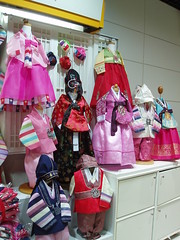 Korean traditional dresses for baby girls(?).
Korean traditional dresses for baby girls(?).What's also unbelievable is that they are open until 5 AM. Even boutiques or any department stores in Tokyo close before midnight. I visited these buildings after midnight. A large volume of Korean pop music with good sound quality was pumped out at the entrance. Inside the buildings were quite a few young Korean people (some looked teens). I wonder how they go home after the metro and bus services are over around midnight - no night buses in Seoul. But taxi fares are cheap in Seoul - it begins with 1900 won (less than 1 pound or 1.5 dollars) for the fist 2 kilometers.
Finally, Cheong Gye Cheon, a small stream cutting across Central Seoul. It used to be covered by the highway. But the current mayor of Seoul decided to scrap the highway and to restore the stream. The restoration work just completed last year. I saw quite a few Koreans, especially families with children, enjoying themselves by walking along the stream. This is suggestive to Tokyo, where there is a similar plan of getting rid of highways overshadowing Nihonbashi, a historical bridge.
As I stayed at Morishita-san's place on the second night in Seoul, I managed to get a glimpse of what life in Seoul is like. I followed him and his wife when they went to a supermarket. Supermarkets in Seoul are again different from those in Tokyo. There are not many large supermarkets in this city. Lotte Mart and E-Mart - the only (?) two large supermarkets in Central Seoul - are pretty much of Anglo-Saxon type with an exception of quite a few "campaign girls" sent by product companies. They wear short skirts and white boots that remind me of "super loose socks" (fashionable only briefly among Japanese high school girls about a decade ago). It sounds like Japanese-style, but we don't have such girls in supermarkets. (They inhabit streets in Tokyo.) People in Seoul come here once a week to buy everything they need for the coming week, which is different from the Japanese style of household shopping - Japanese housewives like to go to supermarkets almost everyday to buy ingredients for tonight's dinner etc. Finally, products on sale often come with a completely irrelevant extra - cereals coupled with towels, for example. It doesn't seem to be part of sales promotion. It's probably just that supermarkets attach unsold stuff randomly to newly stocked products, or so guessed Morishita-san.
Surprisingly, information on Seoul in English is very limited on the web. True that English speakers find it difficult to explore this city as everything is written in Hanguel letters (and sometimes in Chinese characters, which helps me a lot). But I got a sense that exploring this Far Eastern city further will be intriguing. Two days and a half isn't enough! I want to visit Seoul again.
Many, many thanks go to Sooyoung and Morishita-san.
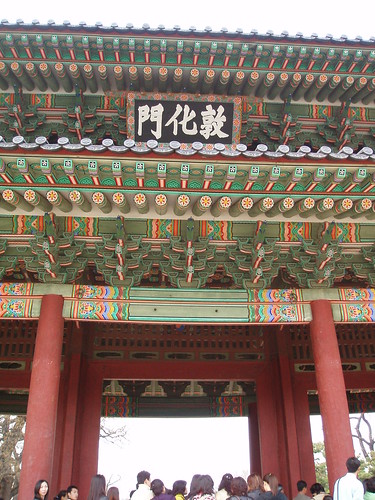
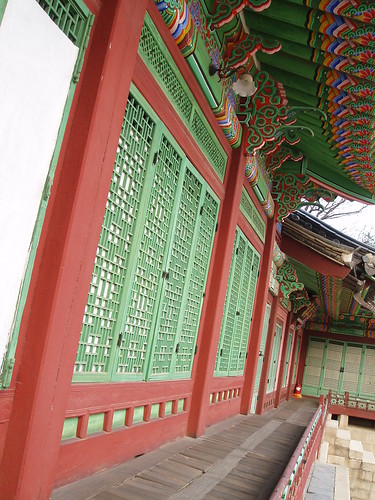
No comments:
Post a Comment